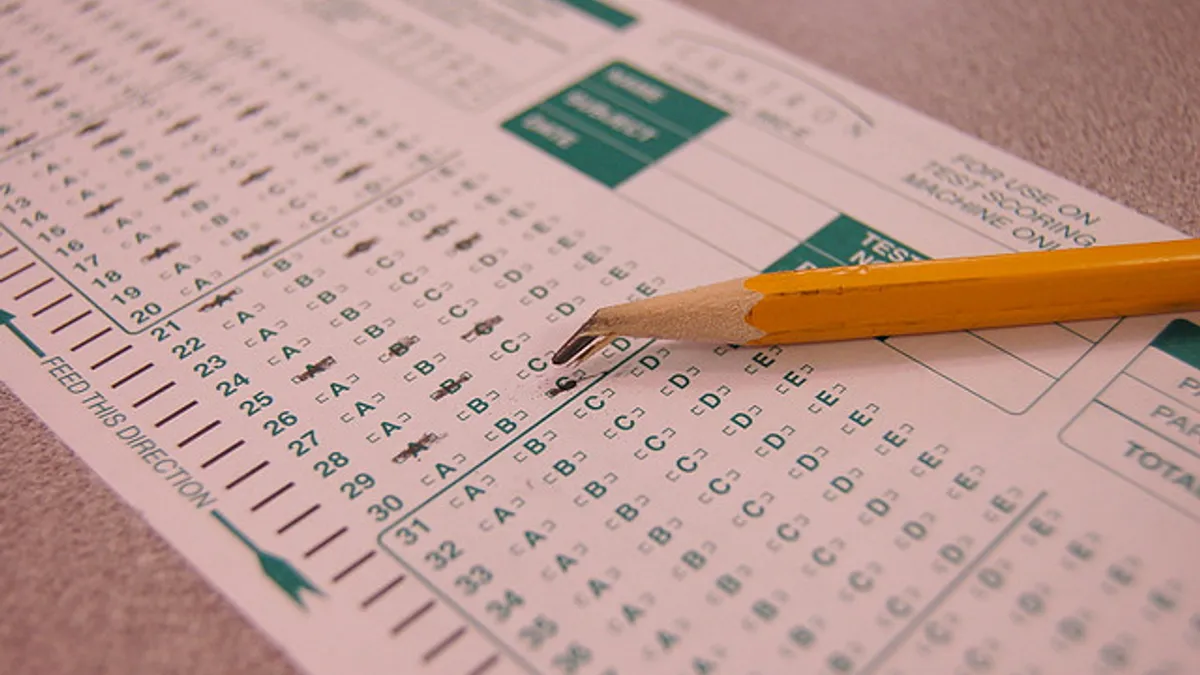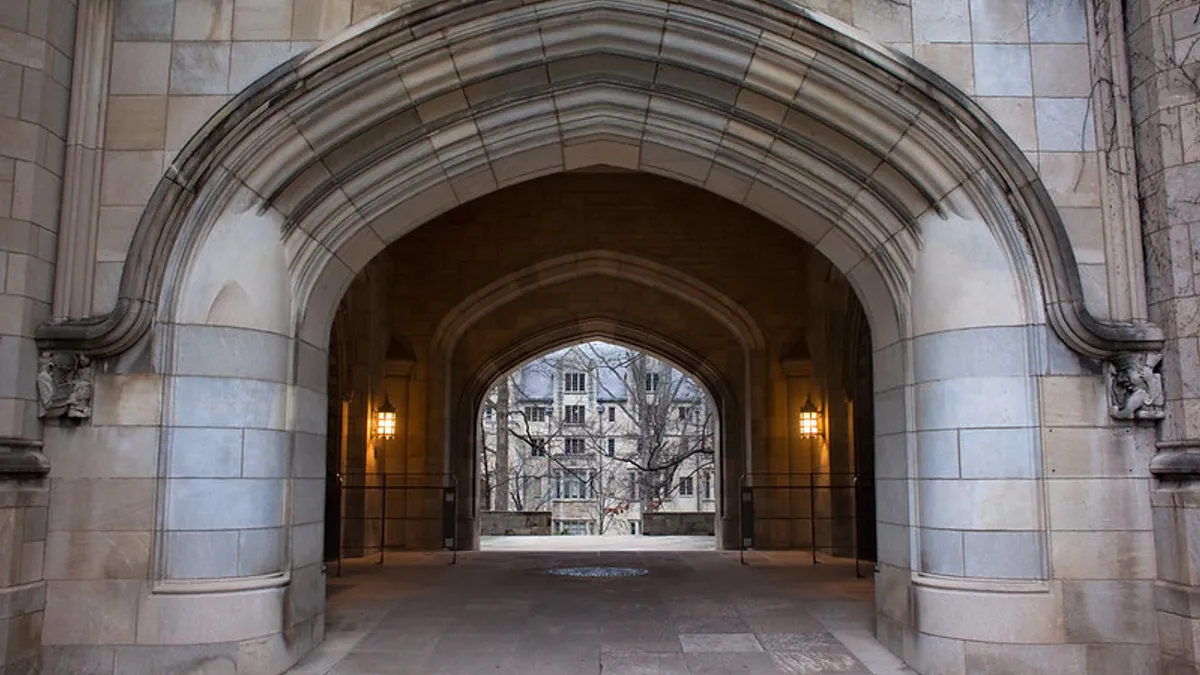As more colleges remove SAT and ACT score requirements from the application process, the School District of University City in Missouri is eyeing how its students can still stand out. That may mean allowing high-schoolers to take virtual courses so their schedule is more open for a college-level class, or offering more field trips to expand the kind of experiences students can have during their day.
"All those little tweaks can help students look a little different on paper," said Robert Dillon, director of innovative learning for the district. "Initially, for equity reasons, schools started to close that experience gap. But now they're seeing the secondary benefit, that that can be a part of college process."
Over two-thirds of four-year colleges and universities in the U.S., from the University of California at Berkeley to Harvard College, won't require prospective students to submit an SAT or ACT score for the fall 2022 admission process.
These scores have long been considered one of the tent poles in the college admissions process, where students sit for hours filling in multiple choice questions in hopes of achieving a score that pops their application to the top of the pile. But now, K-12 school officials are looking at how they can support high-schoolers' applications in other ways so they still catch the eye of admissions directors.
For some, that may mean offering more help with writing skills, while others may encourage students to build online portfolios — professional-looking portals that can be submitted along with a college application in a single click.
Closing the experience gap to expand early college options
Even as the momentum to de-emphasize test scores appears to be building among colleges and universities, Dillon said districts like his are still keeping a watchful eye. They do want to make sure this downshift on requiring SAT and ACT scores is not a temporary change propelled by the pandemic, but one that will stick.
A recent move by 11 educational groups may be a signal toward the latter. Organizations ranging from the National Association for College Admission Counseling to FairTest recently penned a letter to U.S. News & World Report, requesting the publication drop both SAT and ACT scores from its process for building its well-known college ranking report.
And Dillon admits his district is still making some changes — and eyeing potential others — to help high-schoolers bolster their applications. One potential pathway is the chance for students to earn an associate degree before they finish high school by opening the school schedule so they're free to enroll in college-level classes during the day.
In doing so, students can often start their college career with up to two years' worth of credits, not only saving them money on their road to a bachelor's degree, but signaling their readiness for, and mastery of, college-level work.
"Some would call that an a la carte high school experience," he said. "You can start to craft a schedule for your circumstances."
Another focus is offering students more experiences outside of regular work while they are in school. Perhaps that's adding more field trips outside of the classroom, inviting more experts into schools to speak, or partnering with programs to allow students to have internships during the school day. Dillon refers to this as "closing the experience gap," he said, a direction gaining momentum in his district, as well.
"Not only is the experience gap important to close, to help students expand their background knowledge and keep them engaged, now it can also help them when applying for college," he said. "That's further ammunition to keep this option in curriculum and instructional programming."
Writing and recommendation pressures
While writing has also been a core skill woven throughout K-12 curricula, Jayne Caflin Fonash, immediate past president of the National Association for College Admission Counseling, said this tool has only grown more important. With scores not always required, schools are going to need to help students find ways to persuasively talk about themselves. Teachers, too, will need to craft compelling letters of recommendation for their pupils.
COVID-19 has only made both more difficult, Fonash noted. With students more isolated and working from home to varying degrees over the past 17 months, they've had fewer opportunities to connect closely with their teachers and may have also had fewer opportunities to have experiences like internships or a job.
She knows school counselors are already reaching out to teachers, especially those tasked with crafting recommendations for seniors this fall, to help them provide enough context in their letters about their students, especially if their only contact with them was through distance learning avenues this past year.
As for students, she believes educators should assure them it's OK if they didn't have an amazing summer job or volunteer opportunity in the past year. An essay doesn't have to be about an extraordinary experience, she said, but instead can be written thoughtfully about something they've learned — and in a genuine manner.
"Essays don't need to be about solving third-world problems," she said. "There are many ways students have supported their own communities in the past year. We need, though, to be helping students not trivialize or use COVID-19 as an excuse, but instead talk about how they made decisions based on that, and their goals moving forward."
Building portfolios to showcase knowledge
Stephen Himes, co-founder of college coaching firm Storyboards College Admission Portfolios and a former literature teacher at St. Teresa's Academy in Kansas City, Missouri, agrees schools need to help students create more written materials that can "help tell the story of why a student is the perfect fit."
He has watched also as K-12 schools beefed up STEM programming and expanded study abroad programs, all in a bid to help students strengthen college applications.
"These give students the ability to show they can learn out in the field," he said. "That can help them distinguish themselves in test-optional admissions."
Some private and public schools are also using online portfolios, he said, helping to push out everything from grades to schoolwork with one click. Students can build their own online site or portfolio using tools like Squarespace or even YouTube.
One platform, the Mastery Transcript Consortium, has attracted more than 400 private and public high schools by allowing students to add not only online portfolios but also their transcripts and even essays or research papers. The entire package can then be submitted to a college.
"If colleges and universities continue to shift away from testing metrics, then K-12 policy is going to need to adapt to that," Himes said.














